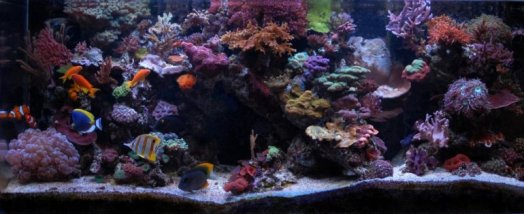
|
|
|
Congratulations Maureen & Jon, on being selected tank of the month. |
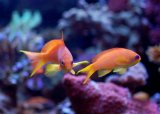
|
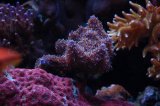
|
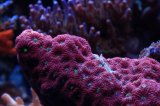
|
Introduction
- Display: 125 gallon acrylic (60" x 18" x 24")
- Sump: 30 gallon acrylic (30" x 14" x 16")
- Refugium: Standard 55g
- Frag tank: Standard 55g
- Skimmer: DAS BX-2 / Avast Swabbie
- Lighting: 2x 400W Radium MH; 4x 24W ATI AB Special; 2x 24W ATI Blue+
- Controller: Aquacontroller III w/ DC8 & X10 modules
- Return Pump: Two Poseidon T4 via Sea Swirl
- Circulation: Two Tunze 6101 and Two MP10
- Supplements: DIY 3 part via Bubble Master TM-01 dosing
- Other Reactors: Two TLF 150 with carbon; TLF 550 with biopellets
Thanks to the TOTM committee and the WAMAS community at large for the chance to show off our tank and share some of our experiences. I've always been a firm believer that TOTM should not be a competition for the “best" tank, but should simply be an opportunity to feature a tank that others in WAMAS might not have had the chance to see in person, and maybe to learn something from it. I hope you learn something from our little piece of the reef.
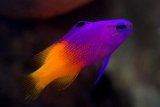 I've always been intrigued by the ocean and the mysterious creatures hidden below its surface. As a child my family took vacations camping near the fishing town of Puerto Penăsco, Mexico, and I spent hours exploring the tide pools of the Gulf of California at low tide, and snorkelling as deep as I could dive to see all the things on the ocean floor. Throughout the years I toyed briefly with the idea of someday having a saltwater fish tank, but always thought it would be too hard to do; maybe later. In 1999 Maureen and I were looking at freshwater fish in a San Diego LFS, and I stumbled across a tank full of live rock, teeming with all sorts of fascinating tiny worms and critters. My interest in saltwater was rekindled, and my wife's encouragement nudged me to make the decision to “just do it". A few months later we had our first reef tank, a 40g Seaclear System II, and soon after we upgraded to our current tank.
I've always been intrigued by the ocean and the mysterious creatures hidden below its surface. As a child my family took vacations camping near the fishing town of Puerto Penăsco, Mexico, and I spent hours exploring the tide pools of the Gulf of California at low tide, and snorkelling as deep as I could dive to see all the things on the ocean floor. Throughout the years I toyed briefly with the idea of someday having a saltwater fish tank, but always thought it would be too hard to do; maybe later. In 1999 Maureen and I were looking at freshwater fish in a San Diego LFS, and I stumbled across a tank full of live rock, teeming with all sorts of fascinating tiny worms and critters. My interest in saltwater was rekindled, and my wife's encouragement nudged me to make the decision to “just do it". A few months later we had our first reef tank, a 40g Seaclear System II, and soon after we upgraded to our current tank.
Current Tank
In 2000 we purchased our current tank, an acrylic 125g with internal overflow. Our vision was to create a mixed reef environment flexible enough to support a wide variety of soft corals, LPS, and SPS corals. We also wanted it the system to be automated as much as possible so that we could spend less time maintaining the tank, and more time enjoying it.
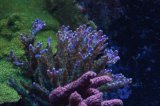 I've had to break the tank down twice and restart it: once in 2004 when we moved to Virginia, and again in 2007 when I deployed to Iraq. I used each of these restarts as an opportunity to improve things I didn't like about the current system. For example, when we moved to Virginia in 2004 I set up the tank in the finished basement, and turned part of the unfinished basement into my tank room. No longer confined to keeping equipment under the stand, I moved some of the equipment out and I also plumbed in a 55g refugium with live rock and chaetomorpha, and a 55g frag tank.
I've had to break the tank down twice and restart it: once in 2004 when we moved to Virginia, and again in 2007 when I deployed to Iraq. I used each of these restarts as an opportunity to improve things I didn't like about the current system. For example, when we moved to Virginia in 2004 I set up the tank in the finished basement, and turned part of the unfinished basement into my tank room. No longer confined to keeping equipment under the stand, I moved some of the equipment out and I also plumbed in a 55g refugium with live rock and chaetomorpha, and a 55g frag tank.
Aquarium Setup
I had two major objectives when I designed the tank setup. First, I wanted the tank to be as automated as possible. I travel a fair bit, and I want the tank to be able to run on autopilot if I'm away for a week or two. Second, I wanted the system to be robust and to minimize risk. This means that I pay more attention to failures that are very likely to happen, or those that have the most severe results even if they're less likely. I mitigate these risks by choosing component brands that have a track record for reliability and are less likely to fail in the first place. If something does go wrong, the Aquacontroller provides monitoring and sounds the alarm, and may be able to turn something on or off to better control the situation. When possible, I have an additional, independent monitoring system that can also stop the situation from getting out of hand.
My auto topoff is a good example. A failure is pretty serious, because it can flood my house and kill all my corals and invertebrates. So I control the topoff solenoid with an air pressure switch and no moving parts, similar to the Avast ATO. If the water level in the sump keeps rising, there's a mechanical float valve that blocks the ATO. If the water continues to rise, there's a float switch at the top of the sump that sounds a piercing alarm, emails me, and can turn of the RO/DI at the outlet. Finally, there's a leak detector in the stand and the stand itself is built to hold an inch or so of water.
Water Movement
Two Poseidon T4 external pumps pull water from the sump, and one of the pumps returns to the display tank through a Sea Swirl. The second T4 pump provides flow to the refugium and the frag tank. Both pumps are connected through a valve manifold that allows me to provide flow to all the tanks from a single pump, in case one of the pumps fails or I need to take it offline for maintenance. I keep a third pump on a shelf in the tank room as insurance, ready to go, in case a replacement is ever needed. I think the return pump is a pretty important piece of equipment, and I don't want to have to wait several days to have one shipped to me, or have to search for one in stock at an LFS. In-tank water flow is provided by a pair of Tunze 6101s at either end of the tank, and a pair of MP10s to supplement.
Lighting
- 1300 - Actinic T5 on
- 1400 - 10k T5 on
- 1430 - 10k T5 on
- 1500 - MH on
- 1501 - MH on
- 2100 - MH off
- 2130 - 10k T5 off
- 2200 - 10k T5 off
- 2300 - Actinic T5 off
Lighting is provided by two 400W 15°K Radium metal halides, four 24W ATI Aquablue Special T5s, and two 24W ATI Blue Plus T5s. I also have two 9W red compact fluorescent bulbs for night viewing; one at either end of my hood. The hood contains 3 cooling fans and a fourth evaporative-cooling fan pointed at the water. Two of the fans operate whenever the metal halides are on, and the Aquacontroller switches the other two on and off depending on water temperature. There's a minute delay between the first and second metal halides lighting to reduce the surge load on the circuit, and help prevent a circuit breaker from tripping.
Filtration
For filtration I use a combination of skimming, chaetomorpha harvesting, and carbon. My skimmer is a DAS BX-2 in-sump model, a licensed copy of the Deltec TS 1060. I've been very happy with the skimmer's performance, considering it's short height, and my only significant modifications have been to replace the stock carbon filter with a drop-in set of baffles. I added an Avast Swabbie neck cleaner and a skimmate container, and this combination greatly reduces time spent emptying and cleaning the skimmer cup. When the skimmate container begins to get full, an air pressure switch notifies the Aquacontroller, which sounds a chime until I empty it. For emergency filtration I keep a couple of Poly Filters and extra carbon on hand, and I usually have 20-40 gallons of mixed saltwater ready to go.
Additives
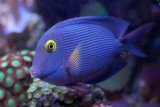
I used to use a Korallin 1502 reactor modified with a pH probe, a second media chamber, and needle valves to fine tune the effluent drip rate. I was very happy with the performance of the reactor once it was set. But when it came time to change the media, or the CO2 tank began to run low, it always seemed to take me by surprise and give the alkalinity an unpleasant jolt. I also had chronically low pH. I switched over to Randy Holmes-Farley's DIY three part additive, dosed with a Bubble Master TM 01 pump. My pH is better but I still run into problems maintaining a stable alkalinity, and I'm likely to add a kalkreactor to my next tank to even things out.
Aquacontroller Setup
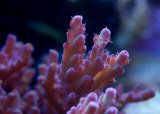
Tank automation is built around an Aquacontroller III. I use DC8s to control the devices that I don't want to fiddle with, like the heater, the pellet reactor, and the Swabbie. For most everything else, though, I use X10 appliance modules. The Aquacontroller still sends signals to the X10 modules to turns the lights, pumps, and other devices on and off, but I'm able to use an X10 remote to make manual changes. If I want to turn off one of the T5s when I open the hood to do maintenance, I just push a button on the remote. I find this much easier than building a power center or using a laptop or always carrying a smart phone. I know others have had reported problems with X10 reliability, but that hasn't been my experience. On my next tank, I'm going to look into buying an inexpensive smart phone or tablet, physically tethering it to the tank, and using an Aquacontroller app as a remote. I should be able to control the tank through wifi without having to purchase a separate data plan, and this will give me the remote control I need without having to always carry my smart phone around with me.
I use two types of audible alarms with the Aquacontroller. For critical issues like tank overheating or flooding, I get emails and there's a piercing alarm. For advisory conditions, like the skimmate container is getting full, there's a much less unpleasant door chime. I also set up my WAMAS signature to display the tank and alarm status, and have found this is a useful way to check up on the tank while travelling.
Feeding
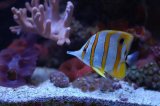
When I first got into reefing, the conventional wisdom was that you could only maintain a healthy tank by feeding as little as possible. Eager to be a good steward of my critters, I followed that advice and lost several fish. Only later did I realize that what fish and corals really need is a wide variety of high quality food, and lots of it. They can often survive on a starvation diet, but in my experience they thrive when well fed. My philosophy now is to feed the tank as much as possible without compromising water quality.
I use a couple of methods to keep the fish and corals well fed. I've wired an Eheim autofeeder into my Aquacontroller, which dispenses a mix of Formula 2 and Prime Reef pellets twice a day. A few times a week I feed a broth of homemade frozen food that includes larger pieces of fish, shrimp, clams, and oysters; mysis shrimp, enriched adult brine shrimp, cyclopeeze, baby brine shrimp, rotifers, golden pearls, shredded nori, and selcon. This mix has sizes appropriate for everything from my larger fish down to SPS corals and copepods. I feed enough to make the tank cloudy.
I've also used chaeto to control nitrates, and was successful in the past in keeping them at zero despite these heavy feedings. I had to shut the tank down in 2007, and when I restarted it in 2008, the chaeto just didn't seem to grow well and I battled consistently high nitrates. I cut my feedings significantly and began doing 45g water changes 2-3 times a month, and still couldn't get the nitrates below 20-40ppm. In December 2010 I began using BRS biopellets in a Two Little Fishies reactor with a MJ1200 powerhead without success. In 2012 I switched to a larger TLF 550 reactor, a larger Mag-5 pump, and added Polycaprolactone pellets from the WAMAS group buy. Within a couple of weeks my nitrates were at zero, and have stayed there for months.
Water Parameters
- Salinity: 35 ppt
- Temperature: 79 - 80 °F
- pH: 8.1 - 8.3
- Alkalinity: 10-11 dKh
- Calcium: 420 ppm
- Magnesium: 1350 ppm
- Phosphate: 0 ppm
- Nitrate: 0 ppm
I primarily use API test kits to measure Alk, Ca, and NO3, and I use Salifert kits for Mg and PO4, and copper when necessary.
I calibrate my pH probe and refractometer regularly, but I recently discovered a more important parameter I've never properly calibrated for: temperature. I discovered, quite by accident, that my Aquacontroller temperature probe was miscalibrated and would read almost 4° lower than the tank really was. So while I thought the tank was usually at 79-80 degrees, with occasional peaks up to 81° or so, it was actually 83-84°, with peaks up to 85 86°. Small wonder that I have random bleaching and STN events more often than the average reefer. I picked up a NIST-traceable glass thermometer with +/- 1°F accuracy for $15 through Amazon, and have correctly recalibrated my Aquacontroller.
Livestock
- Powder Blue Tang
Acanthurus leucosternon - Copperband Butterfly
Chelmon rostratus - Kole Tang
Ctenochaetus strigosus - Tomini Tang
Ctenochaetus tominiensis - Ocellaris Clownfish 2x
Amphiprion ocellaris - Lyretail Anthias 2x
Pseudanthias squamipinnis - Royal Gramma
Gramma loreto - Tail Spot Blennie
Ecsenius stigmatura - Neon Goby 2x
Elacatinus oceanops
We've chosen our fish based on a combination of coloration, functionality, and compatibility, and try to strike the right balance between form and function. The Powder Blue is really the star of the show, and we've gone to considerable trouble to keep her happy and comfortable with her tankmates, despite the PBT's reputation for being a bully. At one point the PBT took a disliking to the Copperband Butterfly, so I moved the PBT to “time out" in the frag tank for several weeks. When I returned her to the display I suspect she had lost her territoriality and thought she was the new kid on the block, because she got along fine with everyone from that point on.
The remaining fish were chosen based on their work ethic, personality, and coloration. We also wanted to have a variety of fish that would inhabit different parts of the tank by nature.
Our coral selections reflect the desire to capture all the best qualities of a mixed reef. We sought a combination of soft and hard corals that combine interesting colors and textures, arranged in a way that's pleasing to the eye, regardless of whether they're part of the latest collecting fad.
Challenges
We've dealt with a number of challenges establishing this reef, and number one has got to be coral pests. With this iteration of the tank, I've had the misfortune of encountering nearly every reef tank pest known to man, including red bugs, acropora eating flatworms, montipora-eating nudibranchs, zoanthid-eating nudibranchs, sarcophyton eating nudibranchs, and zoa spiders. Despite dipping and using quarantine for all my corals, I managed to detect none of these little buggers before introducing them to my tank. Now that I understand their life cycles better, I realize that our dips are ineffective against most pests' eggs. Also, unless you've experienced these pests and really know what you're looking for, you're probably gonna miss it. Now I dip in Revive, Salifert Flatworm Exit, and Interceptor; re frag and discard encrusted frag plugs; quarantine for weeks on end; inspect with a loupe under bright reef lighting; and almost never buy larger colonies which are too large to inspect. Once you lose a tankfull of acropora or zoanthids, you'll understand my paranoia.
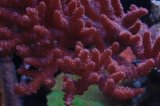 My other challenges deal with water chemistry, including temperature and nitrates, as discussed above. I've also had problems keeping alkalinity stable, both with a calcium reactor and 3-part additive. Much of that is my own fault, like when I made the alkalinity additive double strength on accident. All my acros started bleaching and looking ill, and alk was around 18dKH when I tested it. Or when I upgraded my biopellet setup and nitrates rapidly came down to zero. Alkalinity spiked again and more corals bleached, and I later learned that high nitrates require higher levels of alk supplement to keep alkalinity at normal levels. Take away the nitrates, and all that alk supplementation gave me elevated alkalinity levels. More frequent testing will help keep me out of trouble.
My other challenges deal with water chemistry, including temperature and nitrates, as discussed above. I've also had problems keeping alkalinity stable, both with a calcium reactor and 3-part additive. Much of that is my own fault, like when I made the alkalinity additive double strength on accident. All my acros started bleaching and looking ill, and alk was around 18dKH when I tested it. Or when I upgraded my biopellet setup and nitrates rapidly came down to zero. Alkalinity spiked again and more corals bleached, and I later learned that high nitrates require higher levels of alk supplement to keep alkalinity at normal levels. Take away the nitrates, and all that alk supplementation gave me elevated alkalinity levels. More frequent testing will help keep me out of trouble.
Future Plans
As much as we love this tank, we're about to start a brand new journey. Last fall we picked up a Red Sea Max 34g tank and set it up in our main living space, and found that we got so much more enjoyment out of having an aquarium where we see it day in and day out, rather than making a special trip down to the basement to check out the 125. Plus, the phrase “We need a bigger tank" has been said so many times in our home that now it's like an inside joke. There's never enough room for all the beautiful corals we find, and a large tank opens up new opportunities for fish, too. Finally, as much as I like the clarity, weight, and ease of modifying an acrylic tank, I hate how hard it is to scrape clean. So when McHippo broke down his 350g tank we took the plunge. Our new tank will be a 96"x28"x30" starfire giant in our main living space, with a tank room below in the basement. I've done bit of planning already but I've still got a long ways to go, and I look forward to seeing other folks' TOTMs to learn from.
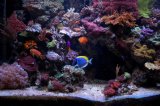 |
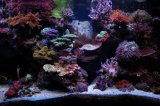 |
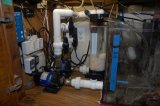 |
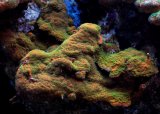 |
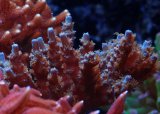 |
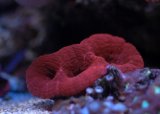 |
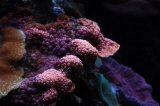 |
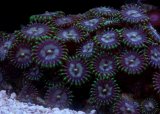 |
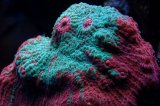 |
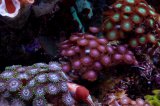 |
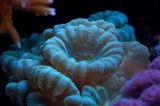 |
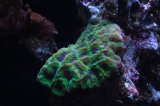 |
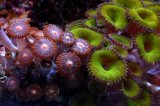 |
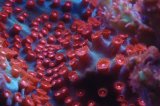 |
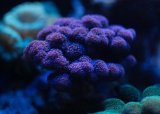 |
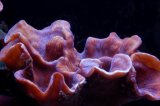 |
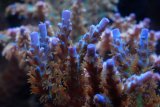 |
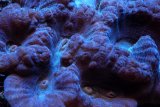 |
 |
 |
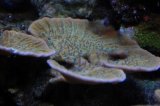 |





